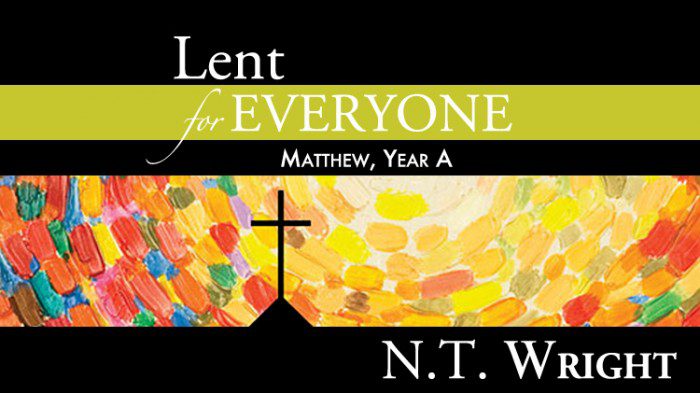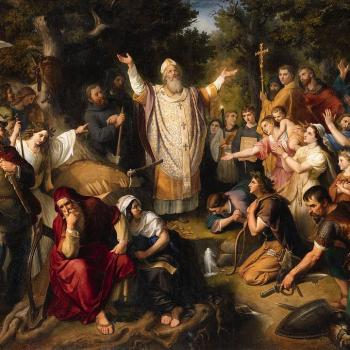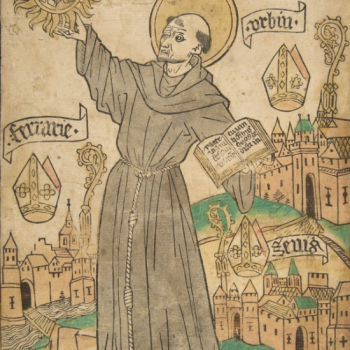This lent I have been using the daily reflections in N.T. Wright’s Lent for Everyone for my personal study and reflection. It’s a book that follows the lectionary sort of. It hits most of the major lectionary texts for the year (this year is Year A), but also makes an effort to trace the overall arch of the book of Matthew (which is the Primary Gospel of Year A). It’s been a huge blessing to read. Wright has an amazing ability to take the text and both honor it’s context historically and textually, while also applying it’s message to the reader today. Most of the reflections serve as short homilies one might encounter at mass, they are concise and thought provoking. Tom Wright brings to the table both his lifetime of biblical scholarship as well as is masterful pastoral sensibility into this short devotional for lent. I highly recommend it!
Here is a sample of his reflection on Matthew Chapters 1-2, I thought it would be appropriate for this week since he reflects on the life of Joseph, the husband of Mary, who’s feast we celebrate this week.
We know very, very little about Joseph. Some legends make
him an old man who died while Jesus was growing up, but we
don’t know that for sure. We know he worked in the building
trade, including what we call carpentry. We know he could
trace his ancestry back to the ancient royal house of David and
Solomon (many first-century Jews knew their family history
as well as many today know the story of their favourite soap
opera, or the fortunes of their football team). And we know
that Joseph faced a unique personal and moral challenge, and
came through it with integrity and humility. Joseph, in this
passage, provides a sharply personal angle for us to approach
Matthew’s gospel.Think how it was for him. Marriage beckons, quite likely
arranged by the two families but none the less an exciting
prospect. A home. Children. A new status in the community –
in a small town where everyone knows everyone else and
where, without television, everybody else’s life is part of a
complex daily soap opera.And then the shock. Mary has news for him, news to
send a chill down the spine of any prospective husband. How
can he possibly believe her strange story? What will people
say? So he plans, with a heavy heart, to call the whole thing
off.Then, the dream. Mary’s story is true. What’s more, she and
her child are caught up, not just in a personal challenge, but in
a much older, stranger purpose. God’s purpose. God’s rescue
operation, long expected and at last coming true. The child to
be born will be ‘Emmanuel’, God-with-us. God with us to save
us: hence the name ‘Jesus’, the same word as ‘Joshua’, the great
leader who brought the people of Israel across the Jordan into
the promised land. The name means ‘Yahweh saves’. God with
us; God to the rescue.Whenever God does something new, he involves people –
often unlikely people, frequently surprised and alarmed people.
He asks them to trust him in a new way, to put aside their
natural reactions, to listen humbly for a fresh word and to
act on it without knowing exactly how it’s going to work out.
That’s what he’s asking all of us to do this Lent. Reading the
Bible without knowing in advance what God is going to say
takes humility. Like Joseph, we may have to put our initial
reactions on hold and be prepared to hear new words, to think
new thoughts, and to live them out. We all come with our own
questions, our own sorrows and frustrations, our own longings.
God will deal with them in his own way, but he will do so
as part of his own much larger and deeper purposes. Who
knows what might happen, this year, if even a few of us were
prepared to listen to God’s word in scripture in a new way, to
share the humility of Joseph, and to find ourselves caught up
in God’s rescue operation?













